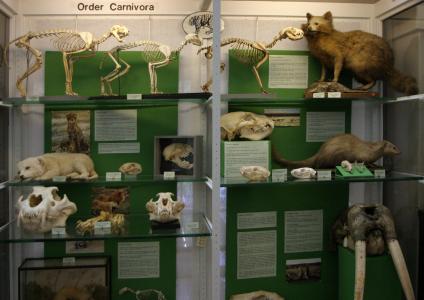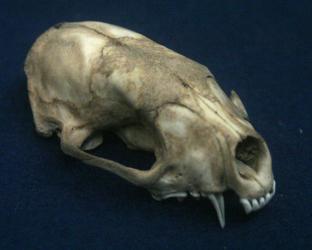

ORDER CARNIVORA
FAMILY MEPHITIDAE
SKUNK FAMILY
General features and members of the family
Striped, spotted, hooded and hog-nosed skunks belong to one of five families of dog-like mammals descended from the wolf-like Vulperines. They occur throughout North Central and South America in a variety of habitats; preferring open areas or the edges of forests and including urban areas. The skunks’ best-known features are their black and white fur coat patterns. The ten species of skunk, in three genera, have different patterns with considerable variation in patterns even within species.
These black and white coat patterns are a warning signal to predators to leave them alone. When threatened, skunks respond by stamping their feet, raising their tails, and performing handstands. If this does not deter the enemy, they discharge a shower of foul-smelling musk from two glands on either side of the anus. The musk is intensely irritating and can cause temporary blindness if it gets in the eyes. Skunks have an accurate aim for targets within 2 metres and humans can detect the smell of musk for up to 1 km downwind.
 |
| Skunk skull (Dental formula: I3/3, I 1/1, PM4/4, M2/3 = 42). The skulls of skunks (Mephitis spp.) are long and wedge-shaped tapering to the muzzle.. They are largely carnivorous and are efficient mousers and grubbers. They use their long claws to dig out food. Rodents and insects are their staple foods, but they also eat grubs, eggs, fruit and carrion, and will raid human garbage. |
| Dog-like carnivorans | Aquatic carnivorans | Cat-like carnivorans |
|---|---|---|
|
|
|






